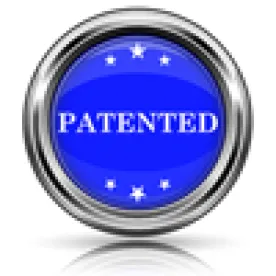As the body of institution and final decisions in inter partes review (IPR) trials grows, useful trends at both decision stages can be identified. One emerging trend is the relative likelihood that two petitions attacking one or more of the same claims will be more likely granted if filed in parallel (multiple petitions, simultaneously, on the same patent) as compared to when filed serially (multiple petitions, consecutively, on the same patent).
While the decision on whether to institute a trial is always up to the Board’s discretion under 35 U.S.C. § 314(a) (see, e.g., IPR2013-00324, Paper 19, at 4 (PTAB Nov. 21, 2013)), serial petitions where the same or substantially the same prior art or arguments have already been presented to the office face an additional statutory hurdle under 35 U.S.C. § 325(d) (which provides the PTAB with discretion to reject a petition where “the same or substantially” the same prior art is at issue in a separate proceeding before the Patent Office). The Board often uses § 325(d) to block the use of serial “follow on” petitions, preventing a petitioner from using a previous denial of institution as a roadmap for a “second bite at the apple.”
An analysis of parallel petitions attacking one or more of the same claims reveals that 57% of the time both parallel petitions were granted (as compared to 43% of the time where only a single parallel petition was granted). Meanwhile, an analysis of serial petitions demonstrates that at least one serial petition was denied 56% of the time (serial petitions were only both granted 44% of the time).
A possible explanation for the greater likelihood of success on parallel petitions is the discretion afforded the Board under § 325(d) to reject petitions where the same, or substantially the same, prior art or arguments have already been presented. Therefore, the danger of filing serial petitions is that the later-filed petition might invoke the Board’s discretion as to what constitutes “substantially” the same art or argument in the earlier petitions. Although nothing prevents the Board from exercising its discretion under § 325(d) on parallel petitions, the Board does not invoke § 325(d) as often in those situations.
The danger of § 325(d) is enhanced by the lack of predictability as to what constitutes the same or similar art or argument across serial petitions. For example, in support of its denial of a later-filed petition after granting an earlier one, the Board criticized the petitioner for relying simply on different prior art references in its serial petition, stating:
Trial was instituted in the ’506 Proceeding on February 13, 2013. That proceeding involves the same patent, as well as the same claims, for which Petitioner is requesting inter partes review in the instant Proceeding. While Petitioner argues that the grounds are not redundant to those instituted on in the ’506 Proceeding, Petitioner does not provide any specific reasoning to support that argument, other than to state that the grounds are based on different prior art references.
IPR2014-00487, Paper 8, at 6 (PTAB Sept. 11, 2014). In contrast, in support of its grant of a later-filed petition, the Board notes the new combinations of art, stating:
We are not persuaded that the art and arguments presented in this Petition are the same or substantially the same prior art or arguments previously presented to the Office. For example, none of the grounds of unpatentability in this Petition rely upon exactly the same combination of prior art as the grounds of unpatentability asserted against the same claims in the 227 IPR. For example, the Petition relies upon a combination of Hitachi and Ohtsuka for disclosing algorithmically processing an image data set to a reduced image data set as claimed, while in contrast the petitions in the 227 IPR relied upon Hitachi alone.
IPR2014-01206, Paper 10, at 11 (PTAB Dec. 23, 2014). Thus, in one instance a petitioner’s mere new combination of art is given by the Board as a reason to deny the petition under § 325(d); in another instance, a new combination of art is given by the Board as a reason to grant the later-filed petition.
The Board decisions provide some guidance to petitioners seeking to avoid a § 325(d) denial. For example, petitioners may want to avoid characterizing serial petitions as correcting deficiencies in a previous filing. Doing so tees up the Board’s “second bite of the apple” and “harassment” rationales as reasons to exercise its discretion and deny the petition. See, e.g., IPR2014-00581, Paper 8, at 12-13 (PTAB Oct. 14, 2014) (“In other words, the four obviousness grounds are ‘second bits at the apple,’ which use our prior decision as a roadmap to remedy Butamax’s prior, deficient challenge. Allowing similar, serial challenges to the same patent, by the same petitioner, risks harassment of patent owners and frustration of Congress’s intent in enacting the [AIA].”). In addition, petitioners may want to have an explanation for why art available at the time of the original petition was omitted. See id. at 12 (“[W]e note that Butamax does not contend that the newly cited references were not known or available to it at the time it filed the 539 IPR.”). However, even not knowing about the art at the time of the earlier petition does not always save petitioners. See, e.g., IPR2013-00324, Paper 19, at 6-7 (PTAB Nov. 21, 2013) (“Furthermore, we note that IBS has not provided any justification for filing the instant petition, other than its representation that it became aware of the relevance of Odedra after the filing of the 128 petition.”).
In sum, if one is considering filing serial petitions attacking the same claims of the same patent, be aware that a look at the numbers reveals a greater risk that at least one petition will be denied than if the petitions were filed in parallel. In other words, where possible, petitioners may be better off attempting multiple bites at the apple at once by filing their petitions in parallel.




 />i
/>i

